Article Note: This article “How to Build, Design, and Market a Killer Website for Your Startup Business?” was first published on 6th December 2015. We last updated this article on 27th September 2022 with fresh information.
Every startup business needs a website. A website opens up a new world of opportunity for all types of businesses – big or small. If you have a startup business that is just taking off, one of the first things you would like to do is get your website in place. The question then arises – should you create your website or should you depend on an experienced web designer to create your online presence? If you decide to create your website, know that you can create a high-quality website almost free of cost.
Creating a user-friendly and effective website required no less effort than creating a house for ourselves. Because in both cases perfection and planning are required. And rather more effort and planning are required while designing and marketing a startup business website. Lots of factors are needed to be kept in mind while making a perfect website.
First and foremost thing what we will have to think about is how and what factors need to focus on while making a successful startup business website that can make us financially strong. So here we are giving importance to the key points to start an appealing new website.
If you’ve decided to build your website, get ready for a few hours of endless fun and creativity. You can build your website in a few easy steps.
Step 1: Registering a Perfect Domain Name

Choosing the right domain name is the foundation of any website. So do not hurry up choosing the name. Simple and slang words or choosing multiple spelling words are not at all acceptable for viewers, because it will be very hard for the customers to remember your website.
The name of your domain will depend on the name of your business. Choose a name that is closest to your business. Some website builders give you several options to choose from. Choose a domain name that is:
- Closest to your website specialization.
- Reflects your brand name.
- Short and crisp.
- Easy to remember.
Choosing a Good Brandable Domain
So, keep it short, simple, catchy, and memorable because long and complex words can mislead customers or viewers to find out your website name.
Next is the keyword, so try to keep keywords that describe the purposes of your business very well. So, keep the focus on that point.
Try to avoid hyphens and numbers in your domain name. This is another misleading factor for customers or buyers. So, try not to use those two things while choosing the name.
The next point which needs to be calculated is the area, where your business or company belongs. If you add your area name on the website, especially your locality name then it will be easier for the customer to find out your website.
The next important factor is to keep researching the name you choose it is already booked or taken copyright by other website holders or not.
Choosing an SEO-Friendly Domain
Also, it is important to remember that domain names must be search-engine friendly. Add search keywords, avoid symbols and punctuation that can complicate the domain name, and use location keywords to find a unique URL. If all the ones you come up with are taken, try adding your city or area name. For example, if your business is called My Startup and is based in India, you could try mystartup.com. If this is unavailable, you could try mystartupIndia.com.
As far as possible, choose .com as your website’s extension. This has more credibility than other extensions like .net and .org.
If you are using a free website builder such as WordPress or Weebly, then you won’t have your own domain, but a subdomain that will read like this: mystartupindia.wordpress.com., or mystartupindia.weebly.com. However, this is a small price to pay for startups. As like mentioned earlier, you can purchase your domain name once your business grows.
Although free, website builders like WordPress require that you buy your domain name as well as pay a monthly fee for hosting your website. These charges are very nominal.
Recommended for you: Get your Business Website Today to Get an Edge over your Competitors.
Step 2 – Option 1: Choosing the Best Hosting
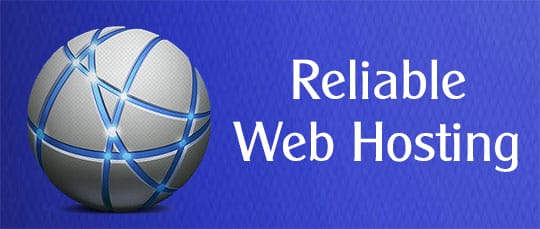
Choosing the right hosting is also an important job to do while starting up a killer website. For that, you will have to understand what your requirements are and then you will have to go for the search.
Focus on your Requirements
In the requirements list, you will have to think about some of the points like trying to choose the hosting as per your website requirements. Whether you need window applications or you will need an advanced version of software like PHP.
And what will be your expected traffic volume on your website? Firstly, it is recommended that do not go for VPS or dedicated hosting, go for good shared hosting. Shared hosting will be cheap and easy to handle for a new website owner.
Key Hosting Features & Factors
Next point of thinking before choosing a hosting is the server uploading time. Because nothing will be much important than getting a 24/7 operating host. Because we all want that our web should be operating on a very powerful and a very good stable network. So, it is known that 99.5% is recommended uptime score and below that is not at all acceptable. So, go for searching those uptime monitor tools where you can get your answers.
If you are planning to add multiple domains then again you will have to go for choosing those hosting accounts that can allow multiple domain names. So be careful while choosing the right hosting account, which proved to be perfect for your business requirements and for your startup website. Sometimes you may like to add or host your email account with your website, then, in that case, go for look up to email features before signing up.
We should also look into the factor, of how good are they in controlling their hosting panel. Because it is very important whether you’re hosting panel is user-friendly and functioning properly or not. Otherwise, you will have to stay in the mercy of the hosting technician support staff for even minor issues. And whether they give 24/7 live chat support?
Some semi-important factors are also there to take into considerations. Like the refund policies, renewal policies, hosting subscription period, limitations on your hosting accounts and many more.
Step 2 – Option 2: Choose a Website Builder

Instead of using a dedicated website hosting provider for your website, you can also use a website builder. A website builder is a tool or program that is used to build a website. Some well-known website builders are WordPress, Wix, uKit, Weebly, Webs, and SiteBuilder.
Most website builders offer three models. The first model allows you to build your website for free. There is a short free trial period, after which you will be billed. The second model is often referred to as the ‘freemium’ model, which allows you to set up a website for free and use it for as long as you want, free of charge. However, you will have access to only limited features. The third model is where you pay to build your website, have your own custom domain, and add as many pages as you want to your website.
The advantage of a free website, other than it is for free, is that it allows you to create a compact website for your startup business. It allows you to start small. You can then slowly build on your website as your business grows.
When choosing a website building platform, ensure you research several free website builders before honing on one that is perfect for your startup business. Take into consideration:
- The type of business you have.
- Your online requirements.
- A website builder that is uncomplicated and easy to use.
The third point is especially important if you have never built a website before. For those new to creating a website, check out WebsiteSetup for an easy, step-by-step guide to get started. Additionally, we have listed two free website building sites here and how you can create your website on each of these sites:
WordPress
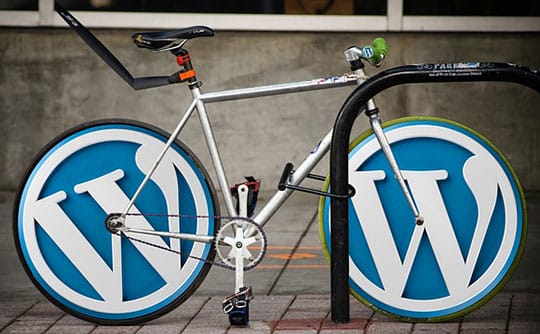
Go to WordPress and buy a web hosting plan. This will also include the cost of your domain name. Select a plan that fits you best. You will be asked to complete the setup process. Install WordPress. Go through the available themes from the menu and start building your site.
Every website builder provides free themes for you to work with. A theme is the visuals that are seen on your website’s front page. One of the most popular website builders is WordPress. There are several reasons for its popularity among newbie website builders.
- WordPress offers free themes that are available online and can be customized with WordPress. Themes make it easy to quickly create a website.
- WordPress offers code-free options. A first-time website builder does not have to have any prior knowledge of coding. Simple drag-and-drop features allow you to build a complete website in less than five hours.
- WordPress offers extensive capabilities. Plugins and integrations can be added without any fuss. So, an e-commerce site can add a complete catalog to its website, easily. As of today, there are over 55,000 WordPress plugins available, allowing you to make endless customizations.
- WordPress offers online resources. WordPress has one of the largest communities of developers who offer endless support to those who require help with creating a website.
Weebly
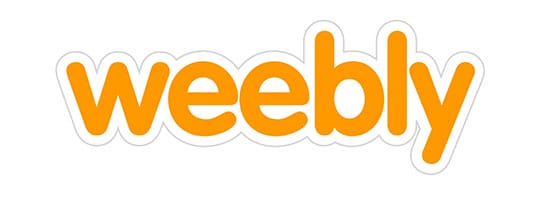
Go to the Weebly website, and create an account. Choose a plan. You would benefit from a premium plan if you want your own domain name and no advertisements popping up on your website. Or, you can choose the free plan. Select a website template. Build your website with as many customizations you want to use to make your website yours.
Weebly is much easier to use than WordPress and therefore lets you build a website faster than WordPress. Weebly is:
- Affordable, when compared to other website builders that cost a small fortune.
- Easy to use and does not require prior knowledge of codes.
- Includes hosting, so you don’t have to pay separately for hosting.
- Built according to professional standards, so you can be sure that your website will look professional.
- E-commerce-compatible, making selling online on the website easy. Adding several catalogs to the website is child’s play and can be done without any prior web development knowledge.
You may like: How to Build a Website – A to Z Guide for Beginners.
Step 3: Choosing the Killer Template
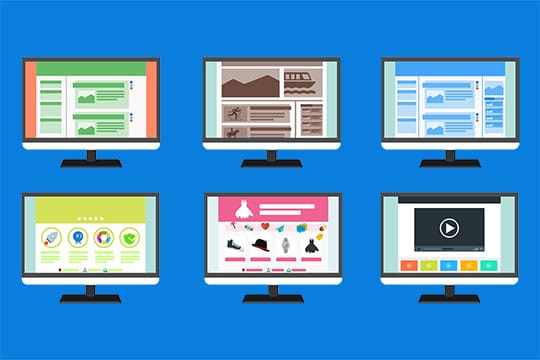
Next coming is the basic factor that we need while making any website, what will be the template of the website? Choosing the right template depends on many factors, and then only it can be the best or better. While choosing any template do not only concentrate on the beauty or artistic section. Lots of important factors are more important to look out for. The template you are choosing whether it is affecting the presentation of your website on different devices or not? How much time your website is taking while loading it? Is it loading faster or taking a little bit more time? That particular theme is being supported by how many browsers? Or how many numbers of customizations are required to finish up the complete look of the template?
Step 4: Making the Website SEO Friendly
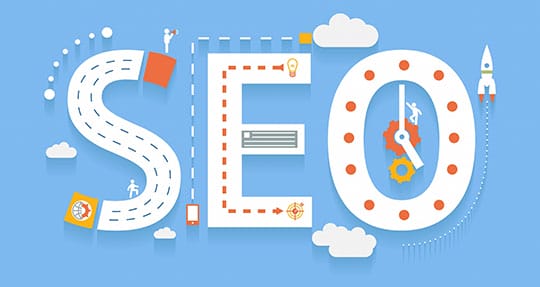
SEO of any website is very important for making it popular. Firstly, researching for the right keyword is important. The two most important factors while choosing the right keywords are competition and misspelling search. You can take the help of word tracker. It is a keyword research tool through which you can get help in getting a relevant database, which in return will help you to give quality and prospective visitors.
Keyword Optimization:
Searching for the relevant keywords is very tough but placing it correctly or strategically is another tough job. But never mind, constant survey and research makes the whole thing perfect.
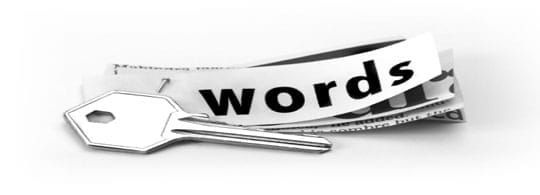
So, let’s comes into the point of placing keywords. Placing the right and relevant keywords of your business or company-related on the URL is a positive sign. Using some bold heading on top and at the end of the pages which is focusing on the area where the search engine can get watched is good.
Next using keywords on the main and important descriptions or domain name or title or Meta tags are there is considered to be positive. So proper and balancing the percentage of keywords, in comparison to other text, the better is the search result.
Content Optimization:
Keep updating the content of your website so that the search engine should not think that the content of your website is not fresh. So, keep a constant effort in making your site look new and rich with valuable contents. So that Search engine can keep your website on the first page of any browser pages. Running a blog and publishing fresh and relevant content on a regular basis is a very good idea.

But one thing is very important to remember, try to avoid SEO pitfalls and common mistakes. Because this can damage your website overall traffic. So, it is advisable that for those who are a novice and have less knowledge regarding SEO, it is better to hire SEO professionals and trust them.
Step 5: Adding Social Media and Sharing Options

Adding social media and sharing options on any websites is a very important way of marketing or promoting your startup business. Now a day’s social media is becoming very popular and demandable among all generations and all kind of profile persons.
So, keeping sharing buttons in your websites is very useful for your site. So, it is very important to make these buttons easier and very encouraging for visitors. Many already know but do not know how to implement them on their websites. For them, it is to tell, that there are several ways of optimizing these buttons. And as a result, you will get extra traffic and total improvement in your website SEO.
Recommended for you: The Importance of Using SEO to Grow Your Small Business.
Step 6: Promoting your Website to Niche Customers

Promoting to niche customers is another good option that can increase sale in your business. Concentrating on a particular mass or group of people who may be your quality customers is the best way of increasing traffic and sale to your website. For example, if you are running a Jewelry business, your main focused customers will be ladies. So, in that case, you can concentrate upon lady customers to sell your item, and that can only bring good traffic and sell to your website making it a killer startup business website.
Step 7: Customer Support and Service

Customer support and services are the last but a very important section for any website or business. The more efficient you can make your online customer support systems, the more customer will love your website. So always try to keep 24/7 live support systems to your customers for any of their quarries and help.
Bonus: How to Find a Professional Web Designer to Build your Website?
Website designers are available by the dozen. There are web designers, and then there are professional web designers. Finding a professional web designer will require some amount of research on your part. Here’s how you can find a professional web designer:
- Word of mouth: Ask for referrals from fellow business partners, colleagues, and anyone else who has got a professional website built in the recent past.
- Search the internet: Professional website designers will have their own website with a portfolio of past work. You can view the types of websites they have created and then choose a couple of website designers whose work impresses you.
- Freelance websites: There are several freelance websites that even professional website designers use to find jobs. You can create an account on one of these freelance websites and state your requirements as well. Website designers who are willing to take up your project will get in touch with you. Or, you can look for website designers on these sites and contact them. Either way, ensure you ask to see some of their previous works, as well as referrals.
Choosing the Best Candidate:

Once you have chosen a few promising website designers, the next step is to hire one of them. Here are some steps that will help you choose the best candidate.
- State your expectations about how you want the final website to look.
- State your goals and the purpose of the website.
- Let them know how many pages you will require them to create.
- Let them know what assets are available.
- Ask them to take you through the entire process of website creation and understand this process from start to finish.
- Provide a clear roadmap of the project.
- Be very clear about the budget of the project.
- Give them a timeline within which you expect the work to be completed.
The best candidate for the job will be the one who can fulfill all your requirements within the stipulated timeframe.
When work begins, ensure there is clear communication between you and the website designer throughout the project. The two of you must work in sync throughout the project to ensure your goals and objectives are fulfilled. Miscommunication can lead to the project veering off the time mark and also might lead to extra costs.
The final step is to test the website before it goes live. Sometimes, this step is overlooked. Testing allows you to catch any issues that might inhibit a proper viewing experience for your website’s users.
You may also like: Your Micro-Interactions Maybe Stealing Your Customer’s Attention – Find out how!
Conclusion

Whether you choose to create your website or hire a professional to create one for you, there are immense benefits to derive from your website. Once your website is up and running, it will only be a matter of time before your business picks up.
Creating a good and user-friendly killer website for a startup business is a long-term process. Constant updates and changes are required to make your customer feel interesting and utility base. So, keep all the above points in mind while planning to create a good and attractive website. Best of luck!
This article is written by us in association with Anthony Schroth. He is a graduate in Software Systems Development. He graduated from the British Columbia Institute of Technology (BCIT). Anthony has several years of experience in web design as well as application development. He is the brain and the brawn behind the Canada-based Web and app development company, DMObjects.





